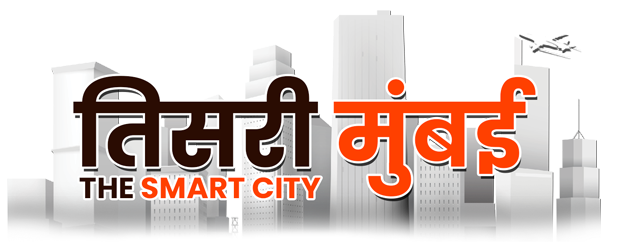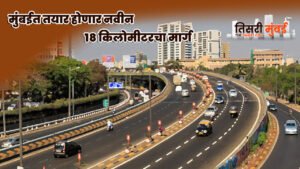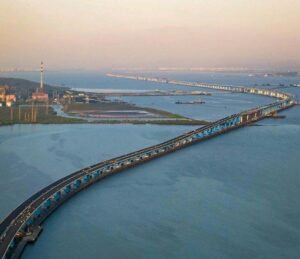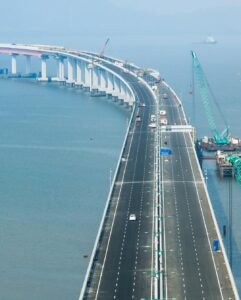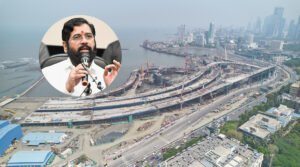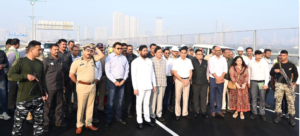The inauguration of the Atal Bihari Vajpayee Smruti Sewri-Nhava Sheva Atal Setu will primarily help people cut their journey between south Mumbai and Navi Mumbai short. The real potential of the bridge will be unleashed once the Sewri-Worli elevated corridor, the Eastern Freeway-Marine Drive tunnel, the Chirle-Palaspe connection, and the Navi Mumbai international airport are completed. These projects will fully integrate the western and eastern waterfronts of Mumbai and make the bridge accessible to a wider geography.

The inauguration of the 21.8 km Atal Bihari Vajpayee Smruti Sewri-Nhava Sheva Atal Setu on Friday will, as of now, primarily help people travelling between south Mumbai and Navi Mumbai cut a long journey short. Its real potential, though, will be unleashed once the Sewri-Worli elevated corridor, the Eastern Freeway-Marine Drive tunnel, the proposed Chirle-Palaspe connection with the Mumbai-Pune Expressway, and the international airport in Navi Mumbai are completed.
All these projects will make the Rs 21,200 crore Atal Setu, or the Mumbai Trans Harbour Link (MTHL) as it has been called at the project stage, accessible to people from a much wider geography.
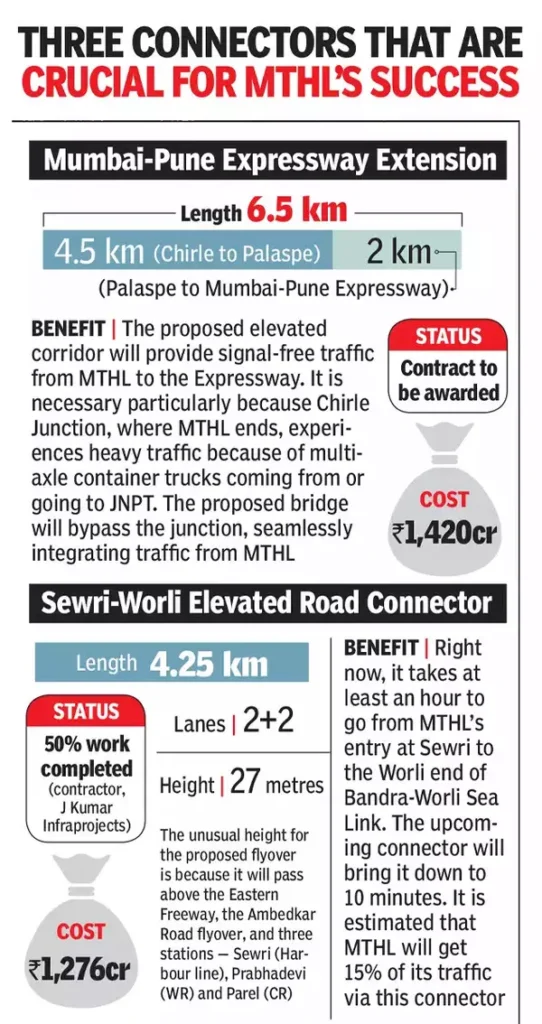
These projects will be completed in phases over five years and ensure that the western waterfront and the eastern waterfront of the island city are fully integrated with the web of tunnels and flyovers coming up in south Mumbai. The one-way toll on the MTHL is Rs 250 and the round-trip toll is Rs 375 for the first year.
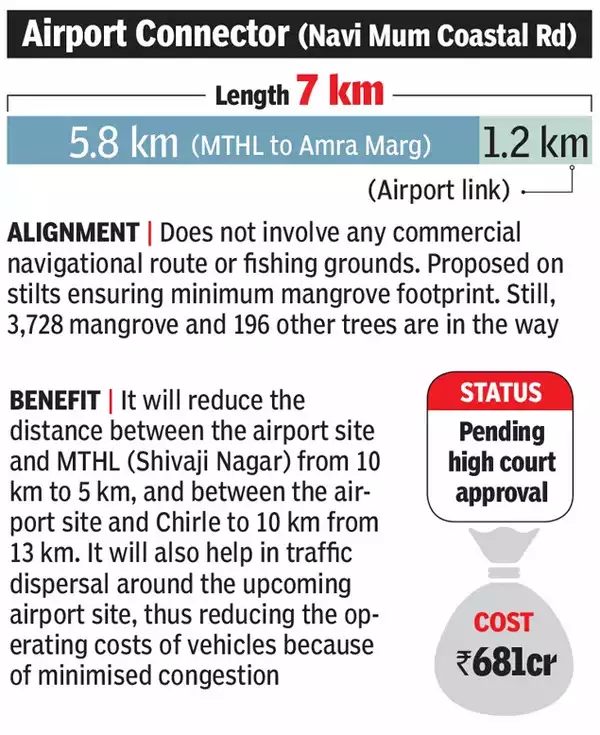
The MTHL, in the making since 2018, will also provide a shorter route to the Navi Mumbai international airport, the much-needed second airport in the region, after the Navi Mumbai Coastal Road is completed.
The MTHL, on which the ideal-conditions travel time between Sewri and Nhava Sheva is 20 minutes, will be an obvious choice for those on the southern tip of the western suburbs once the Sewri-Worli east-west connector is completed – it is at the 50% stage today.
Residents of the western suburbs, especially in the Santacruz-Bandra belt, can take the Bandra-Worli Sea Link, which will provide an interchange facility to hop onto the Worli end of the Sewri-Worli link and head straight to the MTHL.
“It is estimated that 15% of traffic on the MTHL will pass via the proposed Sewri-Worli corridor. The distance between the east and west coast can be completed in 10 minutes as against the present 40 to 60 minutes,” an MMRDA official said.
Once the Sewri-Worli project is completed, a motorist starting from suburban Bandra would be able to reach Navi Mumbai in under 40 minutes.
The MMRDA is also digging an underground link between Orange Gate and Marine Drive to link it with the Mumbai Coastal Road. The project will help those living in Pedder Road, Malabar Hill and Nepean Sea Road enjoy a signal-free ride to the MTHL.
The traffic to Pune too is expected to take a massive jump once the short-cut to the Expressway is built from the MTHL at the Chirle end across the harbour.
At present, the distance from Chirle to Palasphe Phata, from where the Expressway starts, is 15 km, a travel time of almost 25 minutes.
“The 6.5-km-long elevated route between Chirle and Palaspe will help cut down travel time to a mere five minutes,” an MMRDA official said.
Transportation expert Vivek Pai said that as he lived in Andheri, the MTHL was of little use to him as of now. “I think this bridge is primarily for taking those living in South Mumbai to Navi Mumbai, and vice versa,” he said.
Pai said that once the new international airport came up, people from the suburbs too would use the MTHL.
“MTHL users will certainly increase once the Worli-Sewri and Chirle-Palaspe connectors are built and the airport is completed,” metropolitan commissioner Sanjay Mukherjee said.
The MMRDA said that besides passenger cars, the MTHL was also meant for freight and bus operators.
“An individual may find it expensive to travel on the MTHL in his passenger car, but there are many who would not mind paying Rs 100 on average if shuttle trips are planned through public transport or by private taxis,” Ulwe resident Yeshwant Rao said.
The MTHL would also be good for businesses.
“The MTHL will ensure that labour and material will now come to South Mumbai via this link instead of coming via Thane and beyond,” an MMRDA official said.
Vikram Ahuja, co-founder, ANSR, and CEO, Talent500, said the city, which constituted 15%-16% of India’s digital tech talent pool and was already one of the preferred hubs for MNCs looking to set up global centres, would benefit massively from the MTHL. “The launch of the Mumbai Trans Harbour Link will hugely benefit and encourage Mumbai’s attraction as a leading destination for global capability centres. Global companies can expect faster connectivity to the upcoming airport and access to a wider talent pool, and benefit from the real-estate ecosystem, which will flourish in and around the new link,” Ahuja said.
The Navi Mumbai airport is expected to commence commercial operations in December. The Navi Mumbai Coastal Road, a Rs 681 crore project, will link the MTHL and the new airport, besides Amra Marg on the Palm Beach Road.
Cidco said the Navi Mumbai Coastal Road would provide a new transportation route and curb traffic on Palm Beach Road, Amra Marg, and NH-348.
News Source : timesofindia.indiatimes.com
